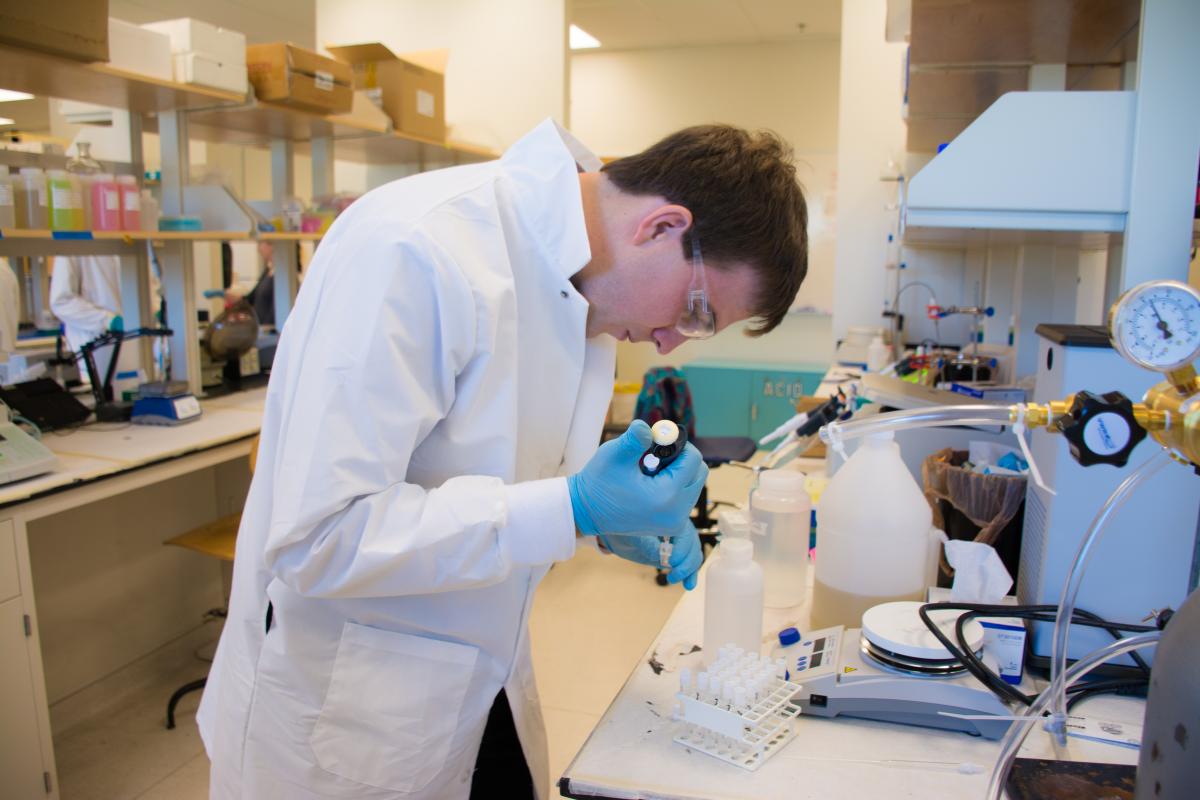 |
| Jarrod Gogolski, a graduate chemistry student, works on a project in the radiochemistry lab. (Photo by Leah Pinkus) |
You could call them the neglected stepchildren of the periodic table.
Stretching across the bottom of the table, the 15 actinides are among the heaviest elements, are all radioactive and are generally not found in nature. The most famous among them, uranium and plutonium, have been integral in shaping the global political and energy landscape, used in nuclear weapons production until the late 1960s and nuclear plants since the mid-1950s. To this day, roughly 20 percent of the United States’ energy comes from nuclear power. But in the wake of the Cold War’s end and the nuclear accidents at Chernobyl and Three Mile Island, interest in studying such elements fell off in the ’90s, leaving a wide knowledge gap at a time when expertise was still badly needed.
Today, Mines, with a new nuclear science chair, a new state-of-the-art 2,200-square-foot radiochemistry lab and a burgeoning research and education program—all funded with help from Transforming Lives: The Campaign for Colorado School of Mines—is working to fill that gap.
“These additions have allowed Mines to become one of the foremost institutions in the world when it comes to expertise in radioactive elements,” says Mines Foundation President Brian Winkelbauer, who points to the nuclear science program as one of many key successes of the six-year, half-billion-dollar campaign. In all, the campaign, which drew to a close this past fall, raised $456 million which was used to fund scholarships, numerous capital projects, campus programs and fund 10 new faculty positions, including the Jerry and Tina Grandey University Chair in Nuclear Science and Engineering.
As the United States grapples with what to do with its nuclear waste and nations around the world eye nuclear energy as a clean and relatively cheap energy source, Mines is poised to be a go-to source for solid science and informed perspectives.
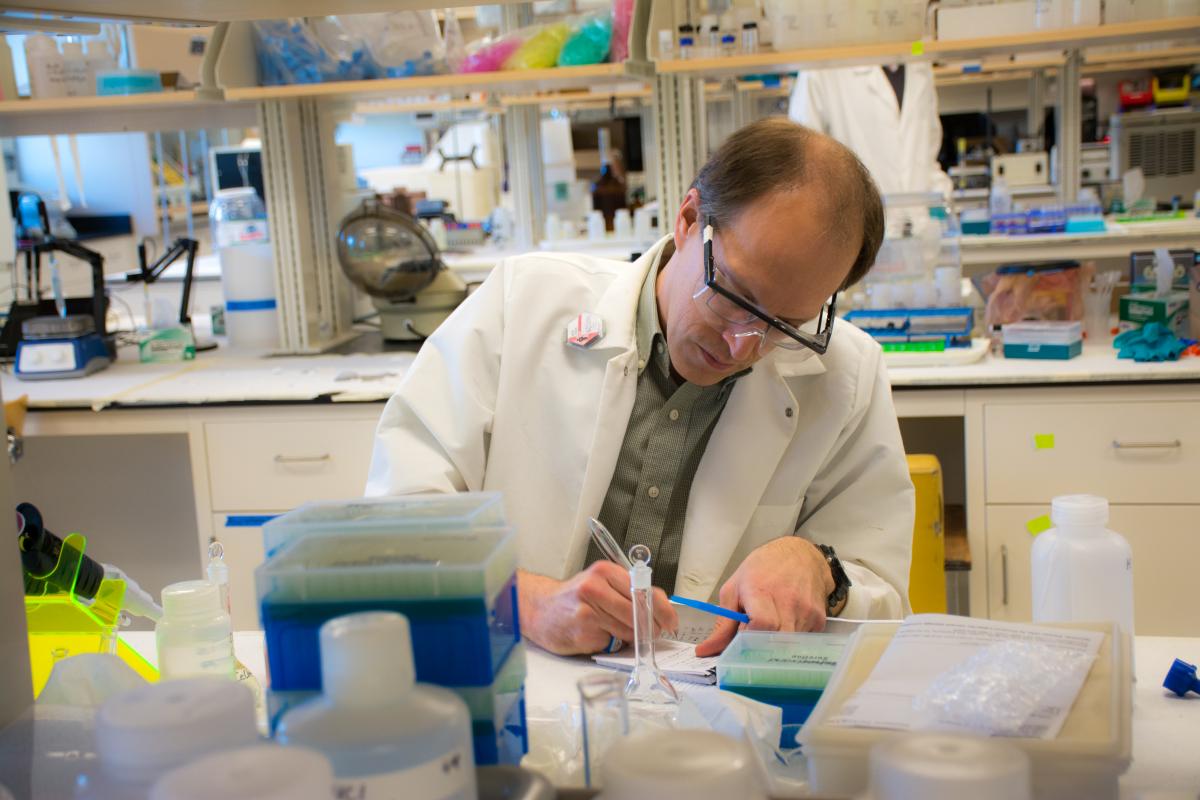 |
| Chemistry Professor Mark Jensen holds the Grandey Chair in Nuclear Science, a position endowed with funding from the Transforming Lives campaign. (Photo by Leah Pinkus) |
Why plutonium research is still critical
Prior to arriving for his new post at Mines in January 2015, Mark Jensen, director of the nuclear science program, spent 20 years at the U.S. Department of Energy’s Argonne National Laboratory studying radioactive elements, particularly plutonium. Asked why it’s important to study, he responds:
“First, let me tell you why it’s fun.”
Jensen explains that until 1941, when University of California Berkeley chemist Glenn Seaborg secretly isolated and synthesized plutonium in a lab, it had “not existed on Earth” in any significant quantities for about 2 billion years. “What that means is that, unlike other elements, we can’t go learn about its chemistry, biology or physics by looking at the world around us,” Jensen says. “Since it hasn’t existed on Earth, nature—especially biology—hasn’t developed any way to handle plutonium.” For a scientist, that presents a rare and tantalizing challenge.
There are also plenty of practical reasons to study plutonium, he adds. “In the last 70 years, we have gone from having no plutonium on Earth to having many hundreds of tons on Earth.” Roughly 60 tons of spent plutonium are generated per year globally, via nuclear energy production, placed in repositories next to plants where they take an unfathomably long time to decay. “Half of it goes away every 24,000 years,” explains Jensen.
Meanwhile, interest in nuclear energy—a relatively cheap, clean-burning fuel source which uses uranium as its feedstock and produces plutonium as waste—is growing globally as nations like China and India grapple with unmanageable CO2 emissions.
With a group of seven faculty and five associate researchers, Mines’ nuclear science and engineering program is exploring not only how to use uranium for energy most efficiently but also how to better deal with the waste and be prepared to address security and safety issues in the unlikely event that it, or legacy waste from the use of plutonium in weaponry, ends up in the wrong hands.
“I think that peaceful nuclear power production is going to be a really important part of our energy portfolio worldwide in the future,” says Jenifer Braley, an assistant chemistry professor and nuclear science researcher who works with Jensen. “We would like for its implementation to be as secure and responsible as possible.”
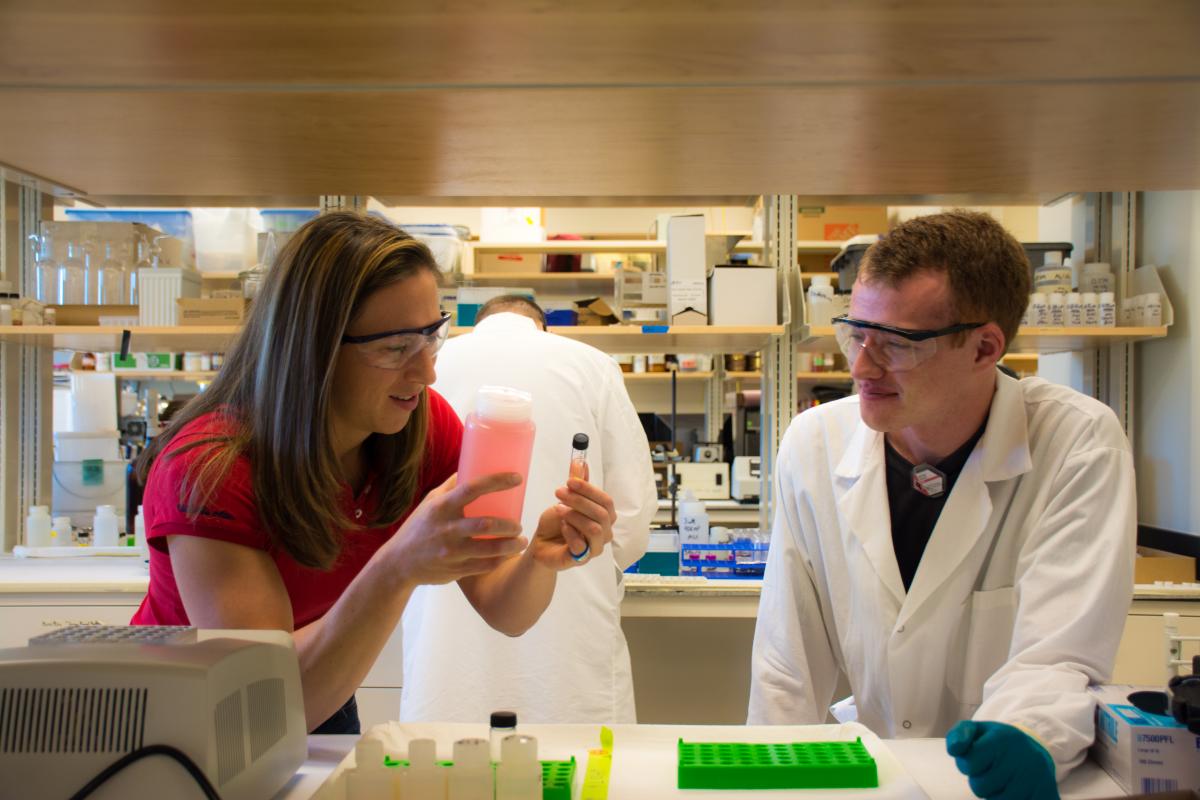 |
| Graduate student Nathan Bessen, right, talks about nuclear science and chemistry with Assistant Professor Jenifer Braley. (Photo by Leah Pinkus) |
The CSI of nuclear science
Braley says she was always fascinated with the “basement of the periodic table” and got turned on to radiochemistry as an undergrad when she attended a Nuclear Chemistry Summer School sponsored by the DOE to reinvigorate the field.
“Research in this area had basically just died off,” she says.
She came to Mines in 2012, drawn to what was already a growing program, and has watched the program flourish ever since. “The facilities infrastructure and support provided by the Transforming Lives campaign has really helped this research move forward,” she explains.
While research is slowly increasing, there are only seven institutions in the country with the specialized equipment, lab space and expertise to work with radioactive “transuranic” materials like berkelium, plutonium and neptunium. Only two academic institutions in the world—Mines and Florida State University—have the resources required to study berkelium. “We have the best-looking radiochemistry lab in the nation,” Braley says.
She and FSU researchers recently published a paper in Science, heralded as the most rigorous characterization of the actinide berkelium. Just understanding the basic science behind how such elements behave could ultimately lead to more efficient nuclear fuel systems and shorter waste-management times, she says.
Braley also specializes in nuclear forensics research, helping to identify chemical fingerprints and develop forensic tools which could ultimately assist government agencies in identifying the source of nuclear materials should they end up in the hands of rogue states or terrorist organizations.
“It is, in a sense, the CSI of the nuclear world.”
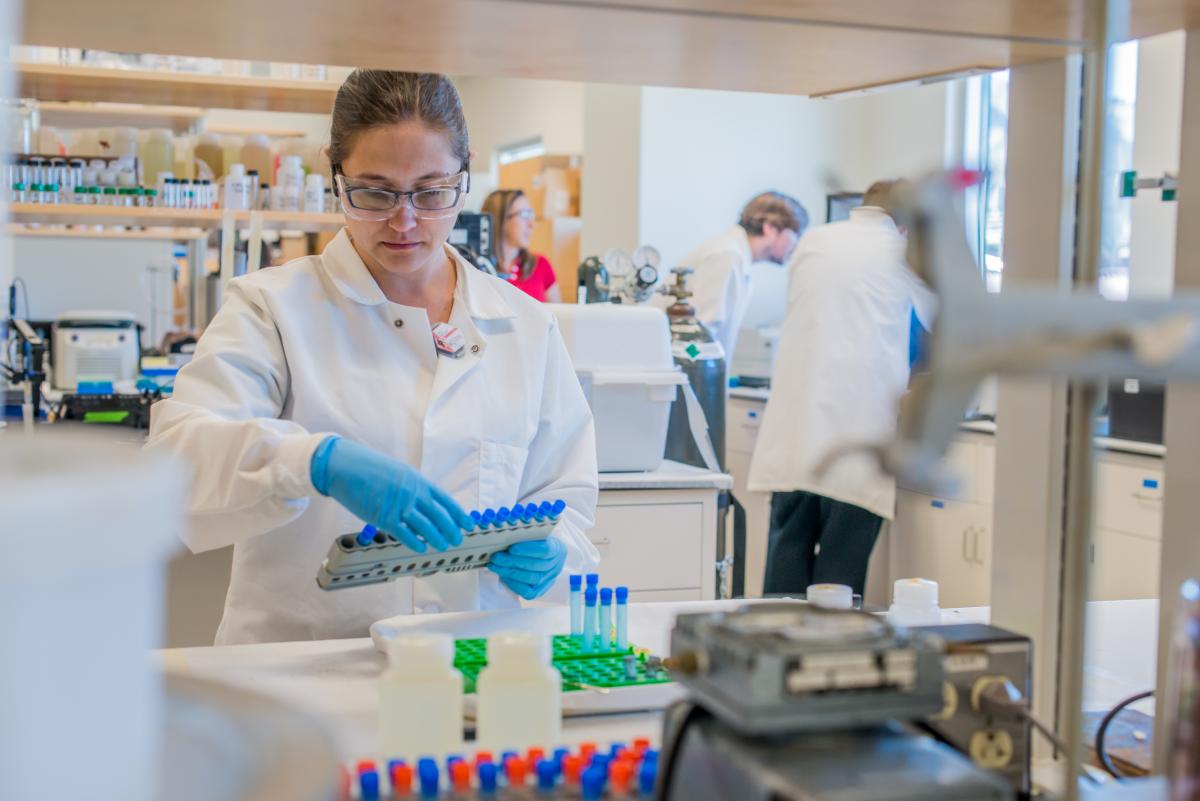 |
| Graduate student Erin Bertelsen focuses on her research in teh radiochemistry lab. (Photo by Ronald Kem) |
From recycling plutonium to treating toxicity
For years, Jensen has focused his research on a concept called “partition and transmutation”—a proposed technology that would essentially extract radioactive materials from nuclear waste stored in repositories and recycle them, both creating more energy and radically reducing the amount of time it takes waste to decay. “You would take them out and put them in a different reactor that would actually destroy the plutonium and other radioactive materials that are going to last a long time. In destroying them, you turn the problem of radioactive waste into something that could be gone in a thousand years instead of a hundred thousand years.”
In 2011, Jensen and his co-authors published a paper in Nature identifying for the first time, precisely how plutonium gets inside of human cells, causing health problems. As he explains it, plutonium binds to transferrin—a protein responsible for shuttling iron into the cells—changing the shape of transferrin in almost the same way that iron does and “tricking the cells into thinking it is iron” so they let it in.
He hopes that someday the research could be used to help develop a drug to block that “Trojan horse” from entering the cell. It could be used to treat workers who are accidentally exposed to radioactive elements or provide an emergency remedy in the unlikely case of a terrorist attack or accident.
For now, Jensen and his students at Mines are working to better understand how cells in the body process and separate other naturally occurring metals, with the hope of learning new strategies for dealing with nuclear waste.
“The real, practical avenue for this research right now is the recognition that biology does its metals separation differently than I as a chemist would do it, and it works pretty well. There’s a lot we can learn from that,” Jensen says.
Mines alumnus and uranium industry leader Jerry Grandey ’68, who donated $3 million to establish the new chair, said he felt that as a school with a strong emphasis on coal, petroleum, mining and renewable energy, Mines would serve its students well by offering a robust look at the technical and policy issues surrounding nuclear energy, too.
So far, so good, Grandey says.
“It’s achieving the objectives I had hoped—exposing students to the nuclear field from beginning to end and all of the issues that come with it. I feel very good about it.”
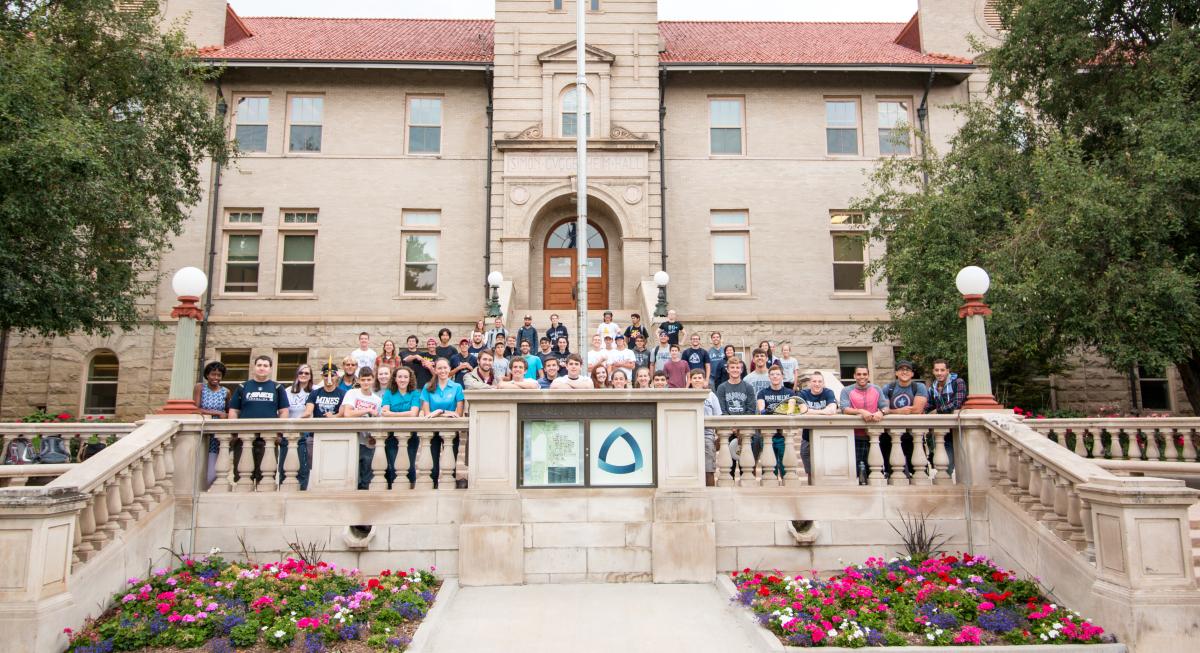
TRANSFORMING LIVES BY THE NUMBERS
The six-year Transforming Lives: The Campaign for the Colorado School of Mines drew to a close in fall 2016, having raised $456 million and far exceeding its fundraising goal of $350 million.
“This is an unheard of fundraising feat for a small public school like ours,” said Mines Foundation President and CEO Brian Winkelbauer. “We capitalized on the incredible pride that our alumni have for this institution and their willingness and interest in making Mines one of the best STEM institutions in the world.”
WHO GAVE:
· Out of 8,857 donors, 5,403 were alumni
· 3,566 gave for the first time
· Mines received 50 gifts of $1 million or more
· Mines’ endowment now sits at $248 million, a growth of 50 percent
WHAT IT BOUGHT:
Donors contributed $63 million for financial aid, creating 168 new scholarships
Several buildings were built or enhanced, including: Marquez Hall; the Wright Student Wellness Center; the Clear Creek Athletic Complex, including a new football stadium and soccer and track facilities; a renovated student center; the Starzer Welcome Center; and the CoorsTek Center for Applied Science and Engineering (currently under construction).
NEW FACULTY POSITIONS ENDOWED WITH CAMPAIGN FUNDING:
Stephen Liu, ABS Endowed Chair in Metallurgical and Materials Engineering
Open, Fred Banfield Distinguished Endowed Chair in Mining Engineering
Paul Constantine, Ben L. Fryrear Assistant Professor of Applied Math and Statistics
Dehui Yang, Ben L. Fryrear Assistant Professor of Electrical Engineering and Computer Science
Tzahi Cath & Michael Wakin, Ben L. Fryrear Endowed Professorship Fund for the College of Engineering and Computational Sciences
Mark Jensen, Jerry and Tina Grandey University Chair in Nuclear Science and Engineering
Mike Mooney, Bruce E. Grewcock University Chair in Underground Construction and Tunneling
Jamal Rostami, Timothy J. Haddon/Alacer Gold Endowed Chair in Mining Engineering
Erdal Ozkan, F.H. “Mick” Merelli/Cimarex Energy Distinguished Department Head Chair in Petroleum Engineering
Lesli Wood, Robert J. Weimer Distinguished Endowed Chair in Sedimentary and Petroleum Geology
To see more about the impact of the campaign visit campaign.mines.edu.
Reprinted from the winter 2017 issue of Mines Magazine, the Colorado School of Mines Alumni Magazine.
Story by Lisa Marshall



